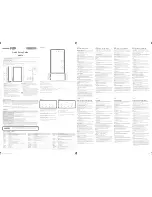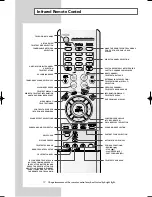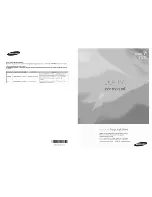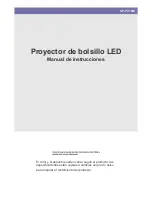
9
Explanation of terms
Following are definitions for some of the terms used throughout these Operating Instructions.
PowerPoint
Application software for creating presen-
tations which is included as part of
Microsoft Office. 95, 97 and 2000 ver-
sions are available, but the JPEG
Convertor software which is bundled with
the projector is only compatible with the
97 and 2000 versions.
JPEG
Abbreviation for Joint Photographic
Experts Group. JPEG is the name of an
international organisation which was
jointly established by the ISO and the
ITU-TS (formerly the CCIT), but the term
is normally used to refer to the specifica-
tions for the still picture compression
algorithm which was formulated by the
JPEG. This algorithm allows still images
such as photographs, single frames of
moving images and scanned images to
be compressed to up to 1/100th of their
original sizes. However, images which are
compressed in this way cannot be fully
restored to their original quality (some
deterioration in quality occurs), so that
compression rates of 1/5 to 1/30 are
normally used. Because of differences in
colour separation, two format sub-types
are used: RGB (red, green and blue) and
CMYK (cyan, magenta, yellow, black).
The projector and the JPEG Convertor
software do not support the CMYK sub-
type of JPEG file.
BMP
Abbreviation for BitMaP. This is the
standard image format for the bitmapped
files (image files consisting of a collection
of dots) which are handled by Windows.
Colour levels of monochrome, 16 colours,
256 colours and 16.7 million colours are
supported.
RLE
Abbreviation for Run Length Encoding. It
can be used to achieve high rates of
compression for image files which contain
large areas of a single colour. RLE can be
used with monochrome, 16-colour and
256-colour BMP image files. (JPEG
Convertor does not support files com-
pressed using RLE.)
TIFF
Abbreviation for Tagged-Image File
Format. This type of file is used to
exchange documents between comput-
ers. Colour levels of monochrome, 256
colours and 16.7 million colours are
supported. TIFF files in 16.7 million colour
format can include transparent colour.
LZW
Abbreviation for Lempel-Ziv-Welch. LZW
is a compression method used for TIFF
files, and is named thus because it was
developed by three people named
Lempel, Ziv and Welch. It compresses the
files by converting patterns within the
images into short codes. There is no
deterioration in image quality resulting
from compression, but high rates of
compression which are comparable to
JPEG files cannot be expected to be
obtained. (JPEG Convertor does not
support files compressed using LZW.)
DCF
Abbreviation for Design rule for Camera
File system. DCF is a standard which was
established by the Japan Electronic
Industry Development Association
(JEIDA) with the aim of realising a
common image file format, directory
name format and file name format for the
images used with digital still cameras. It is
based on recommendations such as Exif
Version 2.1.
Exif 2.1
Abbreviation for Exchangeable Image File
Format. This is an image file format which
was established by the Japan Electronic
Industry Development Association
(JEIDA). It defines the common informa-
tion format and range of application for
images used with digital still cameras,
centring around TIFF and JPEG-format
images. Version 2.1 is the latest version of
the Exif standard.










































